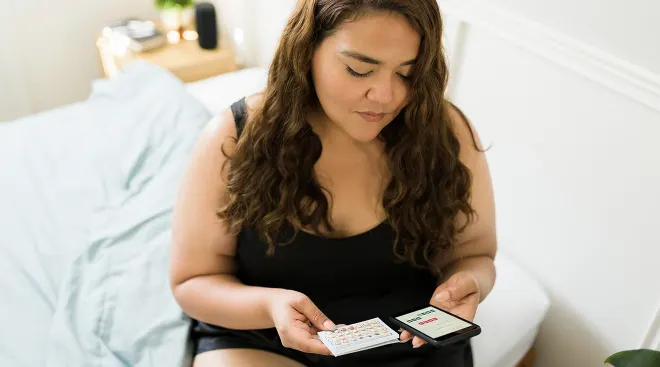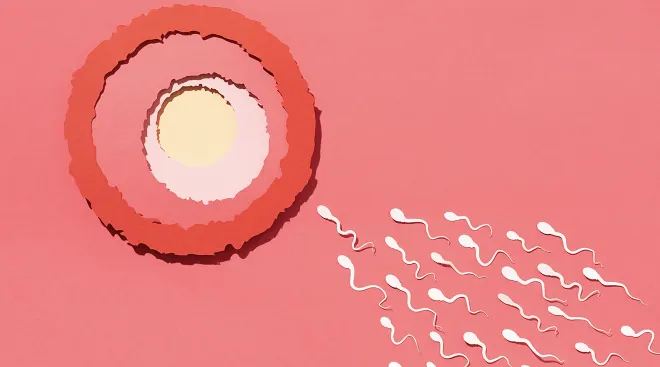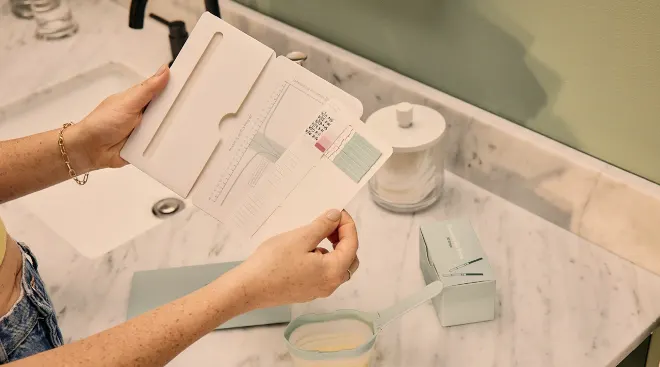9 Common Fertility Mistakes When Trying to Conceive
From having too much sex to not having sex often enough, we asked experts to spill some of the most common mistakes their patients make when first trying to conceive a baby. Are you guilty of any of these? Find out—and learn some easy fixes that could help get you back on track for trying to conceive.
If you can remember back to 5th grade sex ed, many women have a 28-day cycle, which means for them, ovulation generally happens on day 14. But don’t assume that time clock necessarily applies to you. Individual cycles vary, so you may have one that’s slightly shorter or longer, according to Shieva Ghofrany, MD, FACOG, an OB-GYN at Coastal Obstetrics and Gynecology in Stamford, Connecticut. To figure out the exact day you ovulated, you’d actually need to count 14 days back from the day you started your period. (That’s because while not everyone ovulates on the 14th day of your cycle, your period almost always begins 14 days after ovulation.) Use our Ovulation Predictor tool to help you predict when you’ll ovulate next.
When it comes to trying to conceive, timing is everything–but that doesn’t mean you have only one shot at making a baby! When you ovulate, the released egg can survive in the fallopian tube for 12 to 24 hours. There, it can meet up with any available sperm, which can usually live in a woman’s body for about three days and sometimes as long as five, according to Jaime Knopman, MD, a fertility specialist in New York City and co-founder of Truly-MD.com. That means your fertile window is potentially six days—the four days leading up to ovulation, the day you ovulate and the following day. Of those, you’re most fertile during the two to three days before ovulation and the day of ovulation itself.
Believe it or not, too much sex can decrease your man’s sperm count, which can then take a few days to rebound. Once you get your ovulation timing down, Ghofrany recommends having sex every other day, instead of every day, during your fertile window.
If you’ve taken to standing on your head, lifting your legs in the air or bending into any other coital or post-coital position to up your baby-making odds, we’ve got some news for you: You may be wasting your time. (Nope, you don’t need to be a contortionist to get pregnant after all.) The truth is, the majority of a man’s sperm goes toward the woman’s egg the moment he ejaculates, says Ghofrany. As for that left-over liquid that comes out after? It won’t actually have much sperm left in it anyway. So if you want to do it missionary-style or prop a pillow under your hips, go right ahead—but don’t stress yourself out about it too much. Your odds of getting pregnant hinge on many more factors than just mere positioning.
It’s a no-brainer that you’d have to kick those obviously bad habits like smoking, drinking and drug use once you get pregnant. But remember that lifestyle factors can affect your fertility too. In addition to giving up smoking, drug use and heavy drinking, aim to eat a healthy diet, exercise in moderation, try to get your weight into a healthy range and ease up on caffeine, advises Roger Lobo, MD, FACOG, an OB-GYN at Columbia University Medical Center and president-elect of the American Society for Reproductive Medicine.
If you’re under 35, it’s not uncommon for it to take up to a year to get pregnant, says Ghofrany. It’s also completely normal to feel frustrated after a few months—but if you don’t have any underlying health problems, you should probably wait it out before seeking the help of a fertility specialist. Ghofrany says 80 percent of healthy patients will get pregnant within this timeframe. If you’re over 35, go ahead and set up an appointment with a specialist after you’ve been trying for six months, instead of a year. We know, sometimes the wait can drive you crazy.
According to Ghofrany, there are definitely exceptions to the one-year-wait rule: If your cycle is shorter than 25 days or longer than 35 days, if you get very painful or heavy periods, or if you’ve had a significant pelvic infection in the past, it’s a good idea to head to the doctor sooner rather than later to get everything checked out. One more important reason to not put off a doctor’s appointment? If you have a history of STDs. Even if you just think you’ve been exposed to one, it’s best to get checked out ASAP, says Lobo.
A lot of couples focus their fertility investigation on the woman, but Lobo points out that 40 percent of the time, fertility problems can actually be attributed to the man. So if you haven’t conceived after a year of trying and are under 35, you should both head to the doctor. Your partner will probably need a semen analysis to rule out any issues on his end.
We get it—you probably have a lot left on that pre-baby to-do list (establishing a career, beefing up your savings, buying a bigger house, etc.). But age is a factor in fertility. When you turn 35, you officially enter what’s known as “advanced maternal age,” a term that acknowledges the risks of having trouble conceiving–and carrying–a healthy pregnancy when you’re older. According to Lobo, a woman’s ability to conceive decreases by about 50 percent between the ages of 20 and 40. If you’re in a stable relationship and want a child, don’t wait just because you think it won’t be a problem to get pregnant later in life. If you feel ready, by all means, go for it.
Updated February 2020
Expert bios:
Shieva Ghofrany, MD, FACOG, is an OB-GYN who’s been in private practice for more than 14 years at Coastal Obstetrics and Gynecology in Stamford, Connecticut.
Jaime Knopman, MD, is a fertility specialist in New York City with board certifications in obstetrics and gynecology as well as reproductive endocrinology and infertility. She earned her medical degree from Mount Sinai School of Medicine in 2005 and is the co-founder of Truly-MD.com.
Roger Lobo, MD, FACOG, is double board-certified in reproductive endocrinology and infertility, and obstetrics and gynecology, and serves as a professor of obstetrics and gynecology at Columbia University Medical Center. He is also president-elect of the American Society for Reproductive Medicine.
Please note: The Bump and the materials and information it contains are not intended to, and do not constitute, medical or other health advice or diagnosis and should not be used as such. You should always consult with a qualified physician or health professional about your specific circumstances.
Plus, more from The Bump:
Navigate forward to interact with the calendar and select a date. Press the question mark key to get the keyboard shortcuts for changing dates.




















































